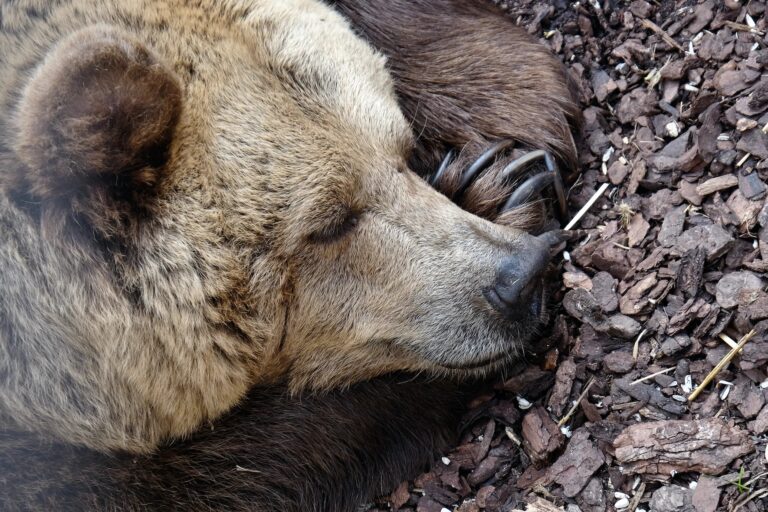Project Description
Although Late Pleistocene bears (especially cave bears) have the focus of a considerable body of research, the spatial ecology of these Late Pleistocene Ursids has received little attention. Cave bears are often considered to be local to the sites at which they are found in the archaeological and palaeontological record and are not considered to be particularly mobile. Instead, they are commonly presumed to have mitigated seasonal variations in food supply through hibernation. However, there have been few studies that have addressed cave bear range size and mobility using direct methods, and no studies exploring the relationship between the dietary and spatial ecology of this extinct taxa (or other Late Pleistocene Ursids). Significantly, modern Ursids can have considerable space needs, which vary with climatic variables and food availability. The range size of modern brown bears (U. arctos), for example, is much higher in arctic in sub-arctic regions than in temperate zones and sex-based differences have also been observed, with males tending to cover larger areas than females (Joly et al. 2022). Better understanding the deeper-time relationship between sex, range size, environment, and dietary niche amongst extinct and extant Ursidae has potential to inform modern bear ecology and conservation.
Using state-of-the-art intra-tooth laser ablation strontium isotope analysis (Le Corre et al. 2023), and targeting the preserved remains of cave bears (and brown bears) from selected Late Pleistocene European sites, this project will undertake the first targeted investigation of cave bear spatial ecology. Strontium data will be integrated with other proxy isotope data (sulphur, oxygen) and compared to baseline ‘isoscapes’ in order to reconstruct the range sizes of these different species and explore inter-species differences. Radiocarbon dating and comparison to site-based chronological and environmental records will be employed to explore any temporal trends during the last glacial period (MIS 4 to MIS 2). Mobility/range size indicators will be combined with evidence for the dietary ecology of the specimens, including carbon and nitrogen isotope analysis and dental microwear analysis (Pappa et al. 2019), in combination with sexing data (via proteomics), to allow the exploration of any relationship between ranging behaviours, sex and dietary ecology.
The supervisory team have significant experience of Pleistocene zooarchaeology/palaeontology, working with isotopic datasets from diverse Late Pleistocene faunal species and modelling palaeoecological data. Prof. Britton’s research spans the Eemian to the post-medieval period, focusing on the interactions between humans, animals and the environment, and the use of isotope zooarchaeology in better understanding both faunal palaeoecology and past environments. Dr Maarten Blaauw brings specialisms in chronology-building and working with diverse palaeoecological datasets, and Dr Edouard Masson-MacLean brings specialist knowledge in zooarchaeology. Additional expertise is brought by Prof. Hannah O’Regan (an expert in the zooarchaeology of bears) and by quaternary scientist Prof. Danielle Schreve who is a specialist in Late Pleistocene mammalian fauna and will offer training and guidance in microwear analysis. Prof. Vaughan Grimes is an archaeological scientist and geochemistry specialist who will facilitate specialist training in laser ablation ICP-MS.
CANDIDATE BACKGROUND
The successful applicant should have a background in biological or environmental sciences; (Pleistocene) archaeology; or geochemistry. An interest in vertebrate palaeoecology is essential.
Image by Daniele Levis Pelusi on Unsplash
Supervisors
Kate BrittonPrimary Supervisor: | Profile: Kate Britton Email: k.britton@abdn.ac.uk Institution: University of Aberdeen Department/School: School of Geosciences |
Maarten BlaauwSecondary Supervisor: | Profile: Maarten Blaauw Email: maarten.blaauw@qub.ac.uk Institution: Queen's University, Belfast Department/School: School of Natural and Built Environment |
Additional Supervisor: |
University of Aberdeen, Geosciences / Archaeology |
Additional Supervisor: | Prof. Danielle Schreve, Royal Holloway Prof. Hannah O’Regan, University of Nottingham Prof. Vaughan Grimes, Memorial University, Newfoundland |
References
Joly, K., M. D. Cameron, M. S. Sorum, D. D. Gustine, W. Deacy and G. V. Hilderbrand (2022). “Factors influencing Arctic brown bear annual home range sizes and limitations of home range analyses.” Ursus 2022(33e11): 1-12, 12.
Le Corre, M., V. Grimes, R. Lam and K. Britton (2023). “Comparison between strip sampling and laser ablation methods to infer seasonal movements from intra-tooth strontium isotopes profiles in migratory caribou.” Scientific Reports 13(1): 3621.
Pappa, S., D. C. Schreve and F. Rivals (2019). “The bear necessities: A new dental microwear database for the interpretation of palaeodiet in fossil Ursidae.” Palaeogeography, Palaeoclimatology, Palaeoecology 514: 168-188.
QUADRAT Themes
- biodiversity






















































